I arrived late in the afternoon in Polonnaruwa, where I had booked a room at the Ekho Lake hotel, an establishment dating from British colonial times where Queen Elisabeth II once stayed. The hotel staff let me have a sneak preview of her suite, complete with its golden bathtub. The hotel is located on a beautiful, perfectly still lake and I enjoyed watching many different birds (kingfishers, eagles, herons) trying to catch fish.
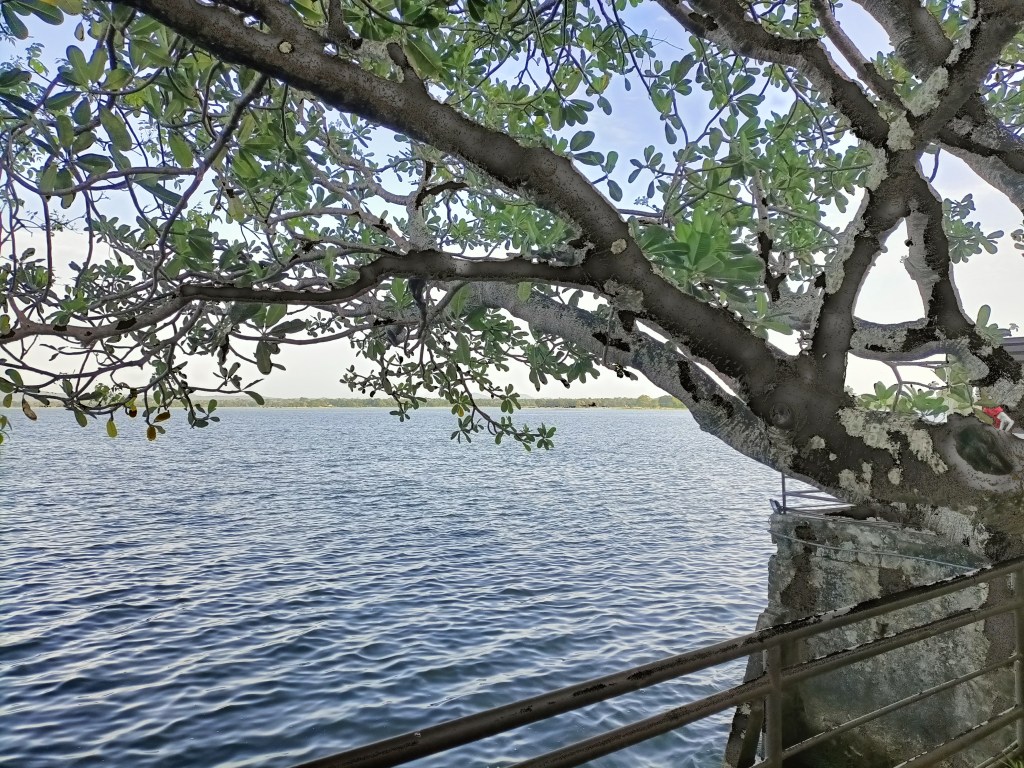
I had a curry dinner, which in true Sri Lankan style was accompanied by a dazzling array of vegetable side dishes. Next morning, I continued my observation of the lake and glimpsed an Indian otter. I asked for breakfast to be set up outside my room, which the staff did with enthusiasm (there were a lot of staff and not many guests). Sri Lankan breakfast closely resembled dinner – chicken curry, rice, and a big selection of side dishes. The array of food attracted the attention of a local monkey, and I got the services of a dedicated waiter with a gun to stand nearby to scare him off (the waiter explained that the gun was empty and just meant to scare the monkey).
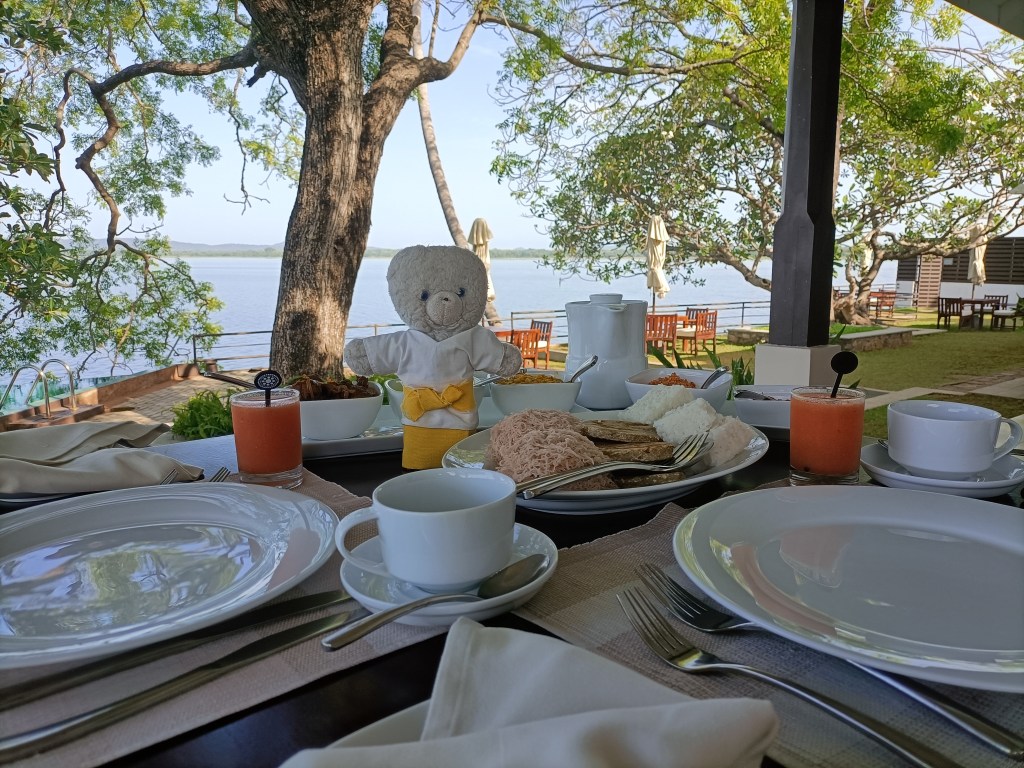
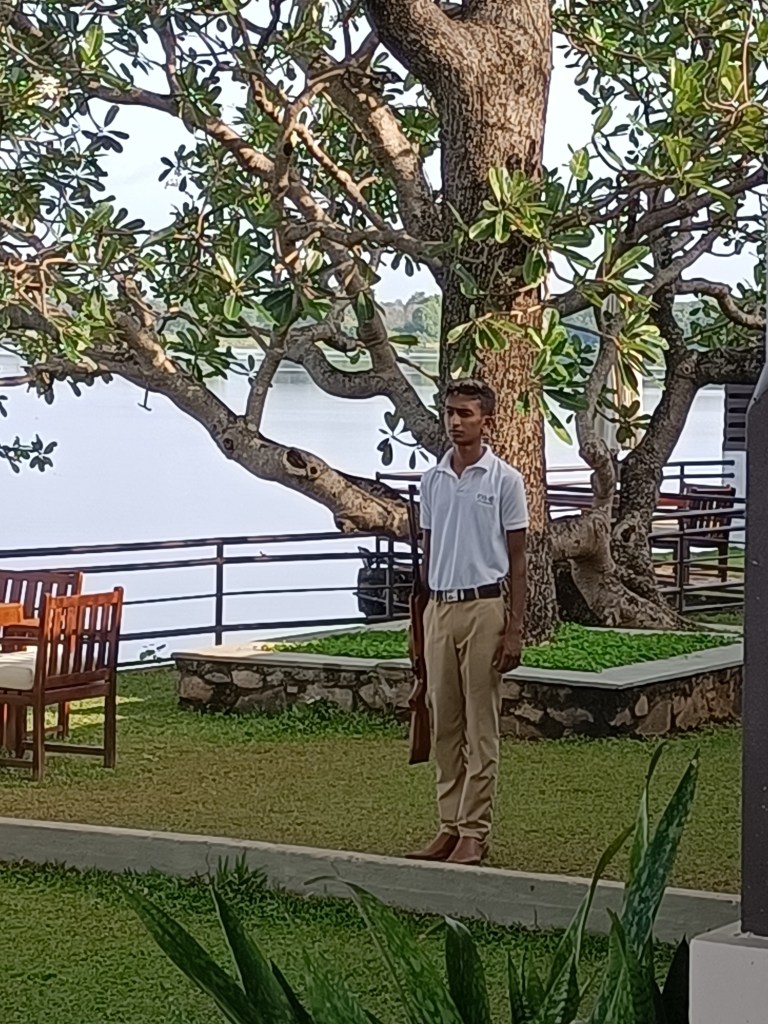
It took me so long to eat the huge volume of food that I set off to explore Polonnaruwa a bit later than I had planned. Immediately after I had left the sanctuary of the hotel, I was approached by all sorts of people offering to sell me souvenirs, be my guide, or give me a tuk-tuk ride. Some of them were very persistent and followed me all the way to the Archaeological Museum, an obligatory stop to buy tickets to the famous Polonnaruwa ruins. This was the first time I had encountered such persistent sales pressure in Sri Lanka, and after many days of only meeting helpful and friendly people, came as a shock.
From the museum I hired a bicycle and set off to explore and leave my unwelcome pursuers far behind. Polonnaruwa was the capital of Sri Lanka from 1070 until around 1200 and over the years successive kings added more temples and palaces to a huge site located near the city’s lake. This civilisation reached its peak under King Parakramabahu in 1153-86 (not easy to say after a few drinks) after which it went into rapid decline and the site was abandoned.
I started my visit by cycling to the very northernmost end of the complex, about 3km away from the main entrance. There I found a lonely building housing a huge headless Buddha figure – and a solitary guardian from the Archaeological office who gratefully showed us around. Even in normal times, very few tourists make it this far away from the main gate.
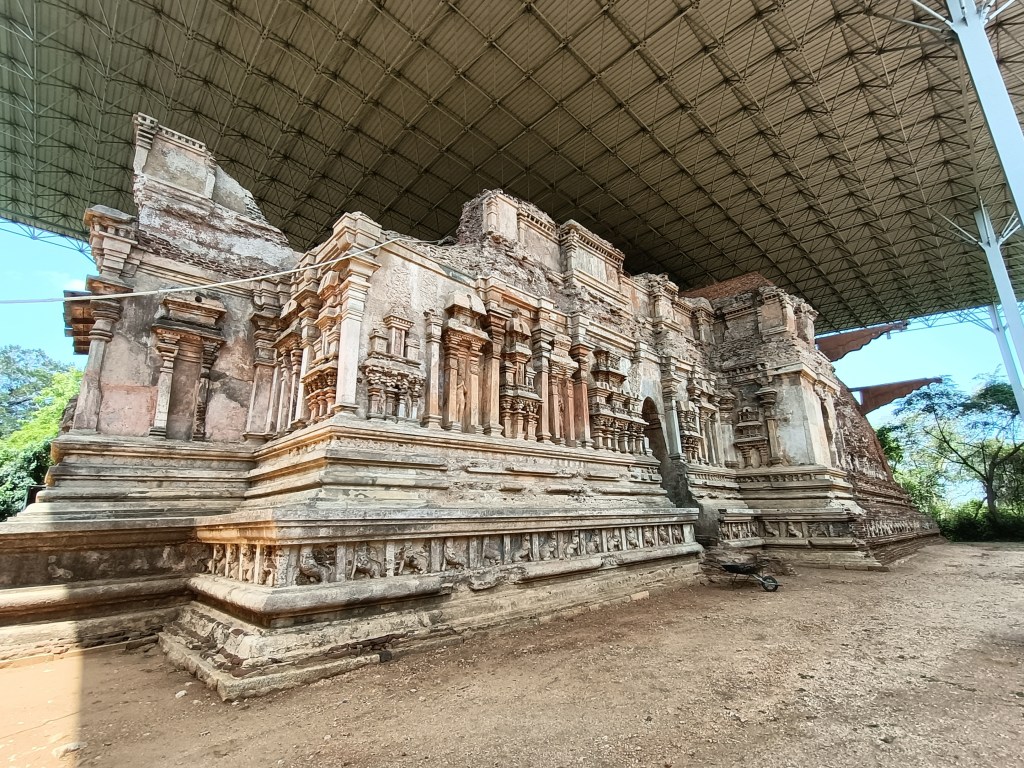
From there I retraced my route to one of the park’s highlights – the carved stone Buddhas of Gal Vihara. When I arrived, there were a few cars and even a minibus in the nearby car park, so I ordered a cold drink from one of the small drinks stalls and waited for everyone to go – I have become used to visiting Sri Lanka’s treasures all by myself! The three large Buddhas, carved out of a single huge granite rock, did not disappoint. They represent the high point of Sri Lankan art at this period and conveyed a sense of calm and peace. They had sat there silently for 900 hundred years, and I could easily imagine them continuing their meditation for many millennia.
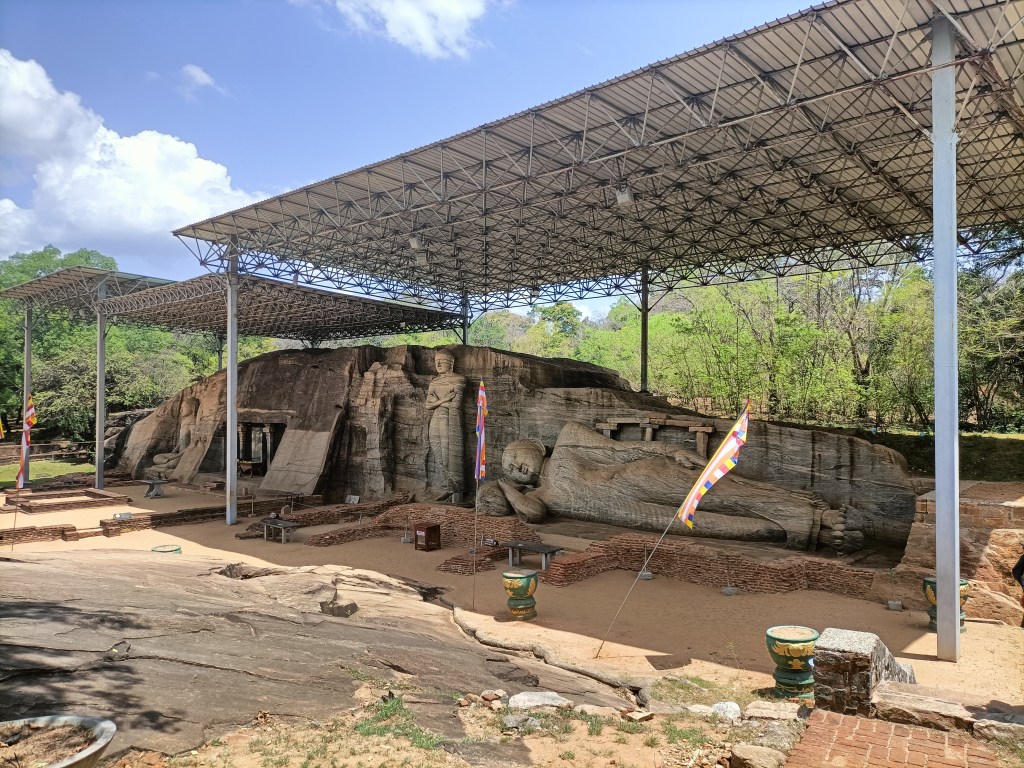
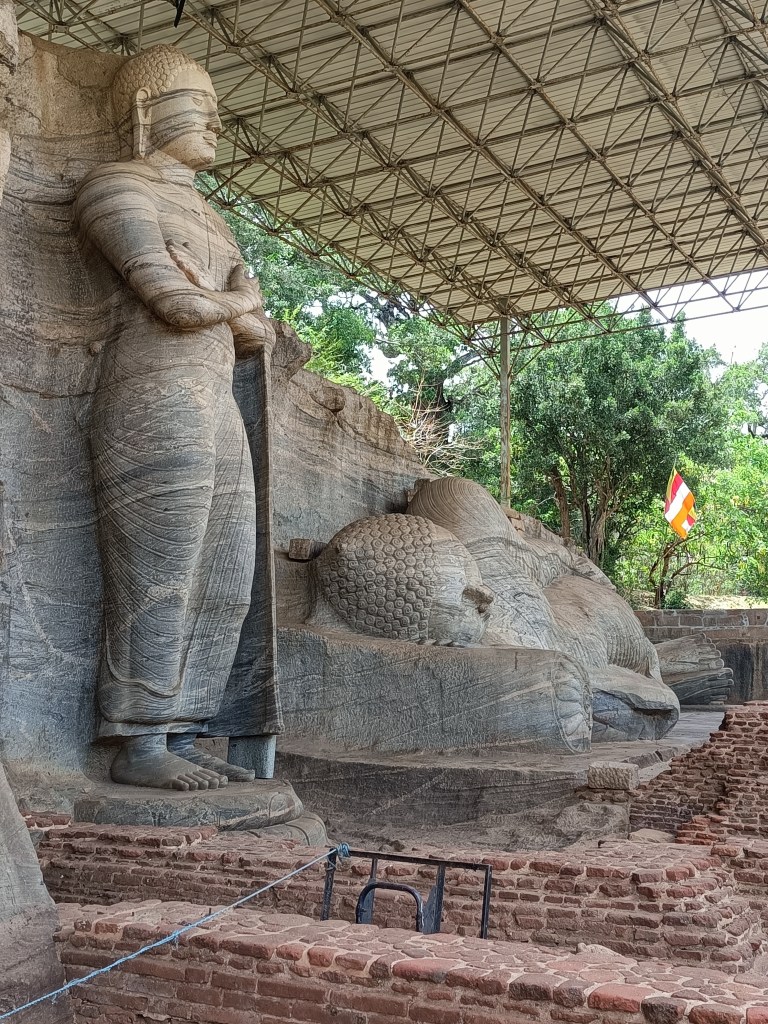
From Gal Vihara, I walked to the next highlight – the shrine of Lankatidaka, whose layout was a bit like a western cathedral, with a long aisle leading to another huge Buddha statue.

I reclaimed my bike from the drinks stall and headed to Rankot Vihara, a huge central stupa…….

And then to the “Quadrangle”, a collection of ruins crammed into a small square area.
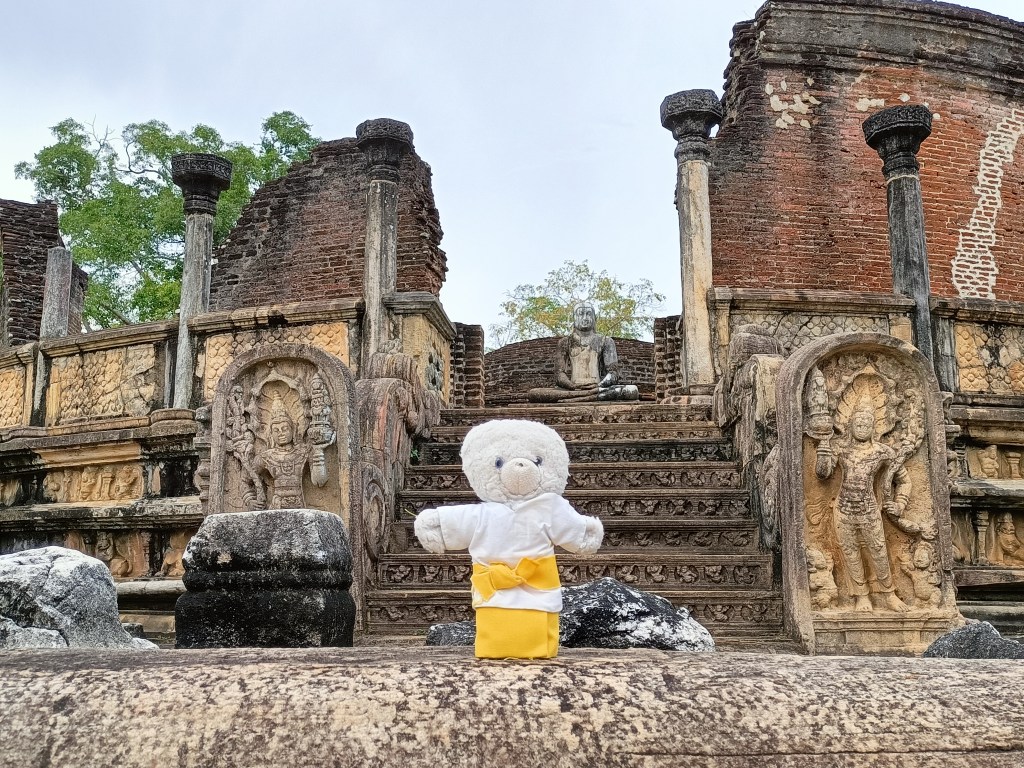

It was very hot (partly due to my late start) and I had developed a small routine for visiting each ruin – have a drink at the nearest drinks stall and leave my bike with the shopkeepers for safe keeping. My final visit of the day was to the Archaeological Museum – listed as a highlight by my guidebook, but actually rather disappointing compared to what you can see cycling around the archaeological park.
Soaked in sweat, I returned my bicycle and headed back to my hotel for a shower. Shortly after I arrived, the usual Sri Lankan thunderstorm broke, and I spent the next couple of hours enjoying my room before heading off to dinner. This time I chose to eat in a local guest house whose owner gave cooking lessons and was treated to another curry feast.

I had enjoyed Polonnaruwa a lot. The ruins are better preserved than Anuradhapura (as you would expect, being 1000 years younger) and very impressive – but I think out of the two exceptional sites, I preferred the latter because it remains an active centre of worship.
Tout est très beau! Et les currys ont l’air délicieux!
LikeLike